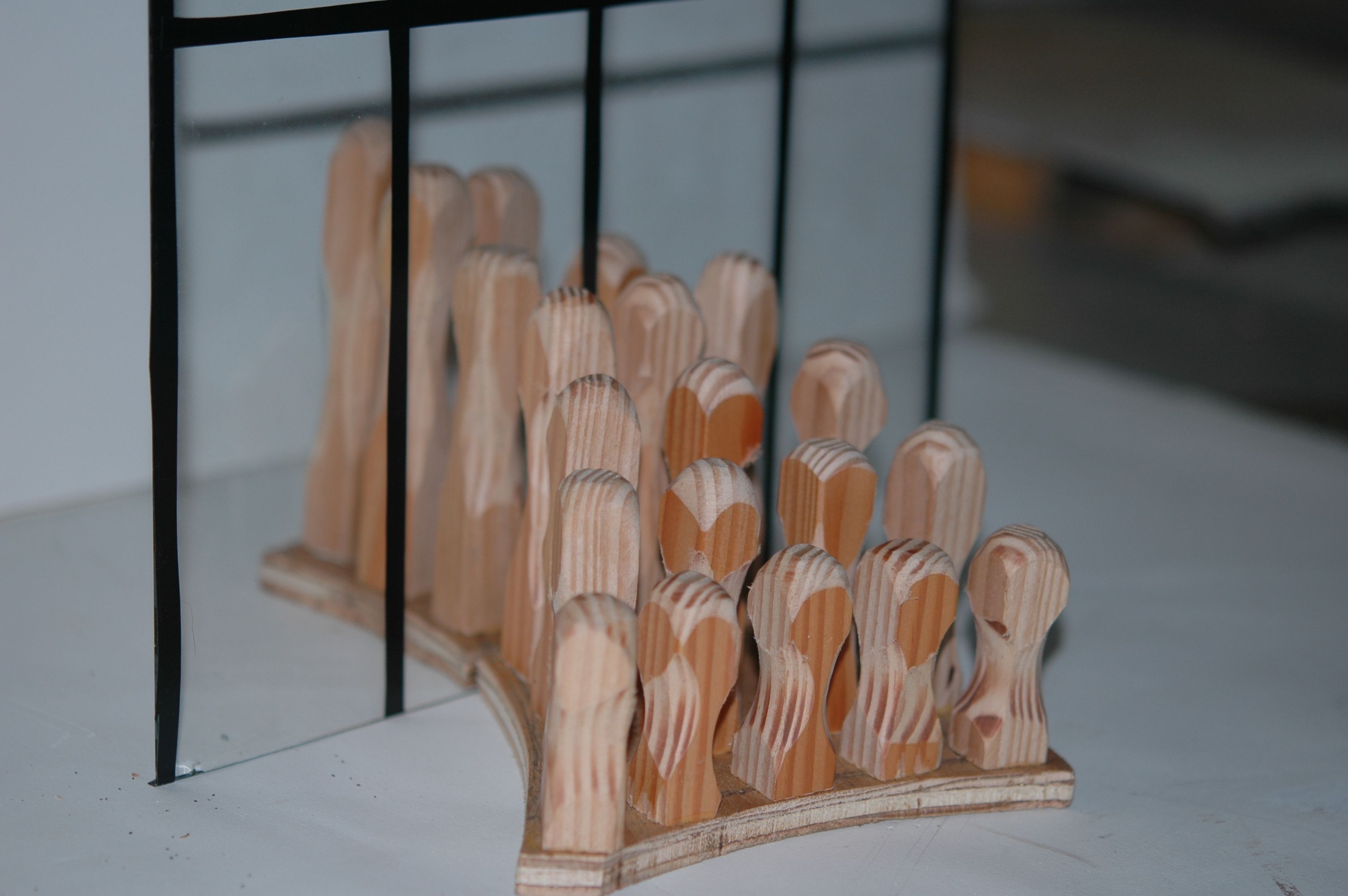Bret Lyon, 2013
Lot 411
Wood, Steel
7′ x 7′ x 10′
Description:
A wood and steel sculpture produced for the Foss Waterway Seaport using lumber salvaged from the original wheat house building located at this site.
Read about Lot 411...
In researching the Seaport I found that it has gone through many phases in its history. Built in 1902, it was called the wheat house and stored wheat during transfer from the rail lines to the ships. Later, in 1934, the structure was used as a distributing center for the grocery store, Cash and Carry. Even in the present day, the Seaport has gone through several stages of transformation. The Seaport has acted as a steward for history while creating a new history for the Balfour Dock Building.
In its current phase of construction the Seaport has gone through a facelift. The removal of the northwest wall has exposed the inner skeleton of the building. The architecture of the building has some historical significance. It was constructed by the Railway Company and they inverted their bridge construction to support the roof. By removing the wall and replacing it with glass, the inside was brought out and the outside in. This was a compelling thought when developing my concept. Use of the old lumber from the Balfour Dock Building was encouraged by the community, the Seaport Committee, as well my own personal draw to it. I feel utilizing the lumber creates a strong connection to the building’s history and is a good fit with the largest maritime heritage and education center on the west coast. The vehicles that moved the goods, the trains and ships, were the reason for the structure and are another source of inspiration. I get a strong sense of movement through the building from the goods, manpower, and the vehicles that came and went from the site. I wanted to gain a sense of movement and draw upon the Seaport’s rail to sail philosophy using visual cues that connect the viewer to the site’s history. Showing the sense of time was another source of influence. I worked with the old lumber by wearing it down and exposing fresh wood underneath but leaving some of the old marks. In doing this, one can get a sense of old and new. By exposing the raw flesh of the wood in contrast with the wood that was weathered by time, a connection is created between the history of the wood and the future of the facility. The piece consists of 20 posts of varying size cut from the wheat house lumber. The lumber was 14″ x 10″ and the tallest post in the sculpture measures 6’6″ tall and represents the height of the stacked wheat bags that were stored in the building. From there the posts get progressively smaller, eventually down to 2 1/2 feet tall. The footprint of the posts forms the shape of a sail and the posts are held together by galvanized steel strap. The framework draws inspiration from the merging railroad tracks in the sections where the trains changed tracks. The piece is comprised of two sections with one located in the interior of the building and the other on the outside with the two sections separated by a glass wall. This inside-outside element to the piece brings a connection to the new architectural element and that connection makes the two sections of the sculpture read as one continuous piece. |
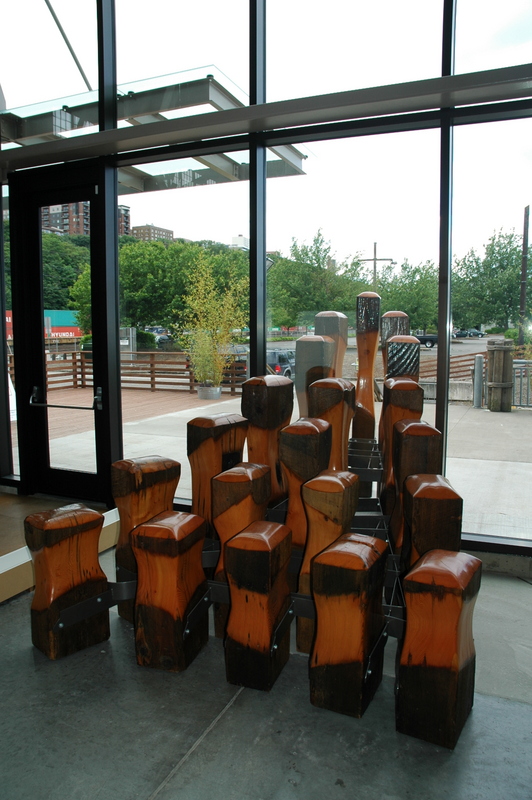
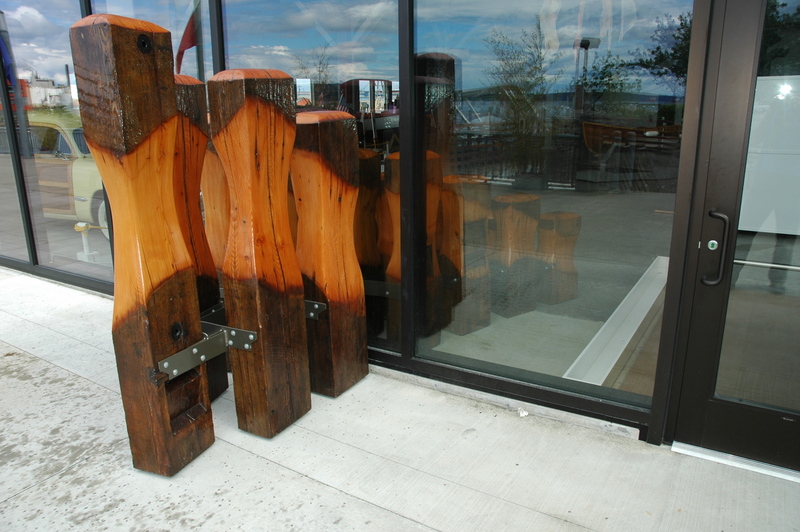
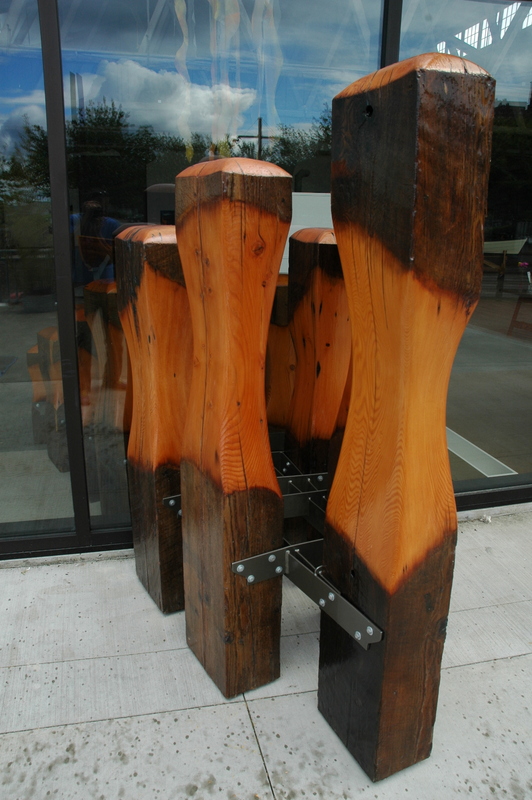
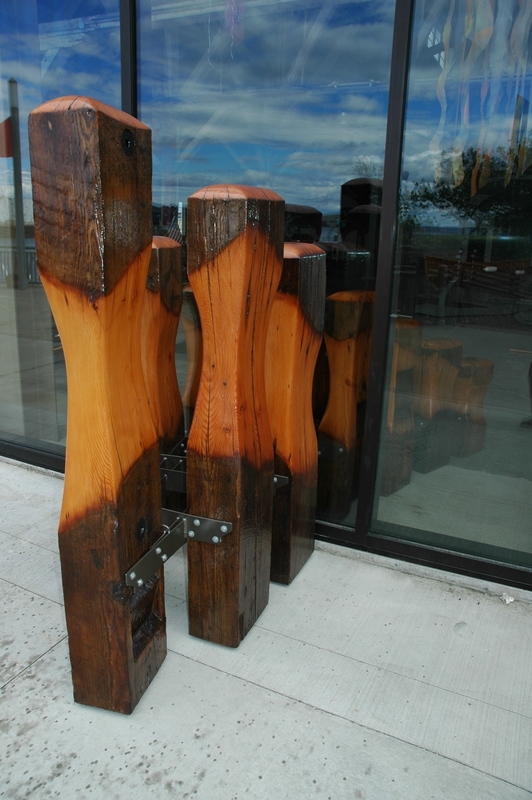
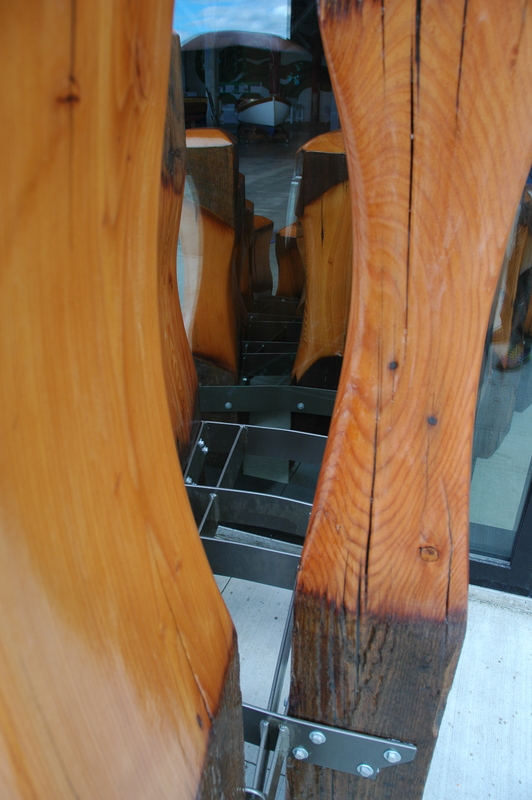


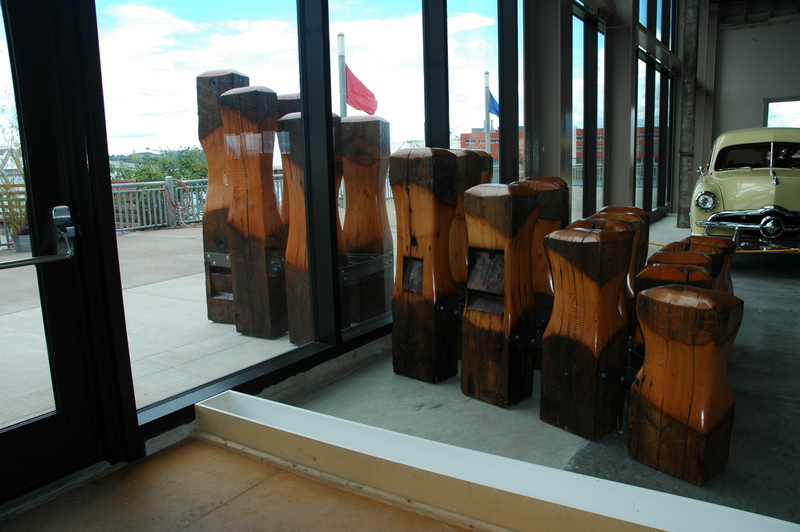
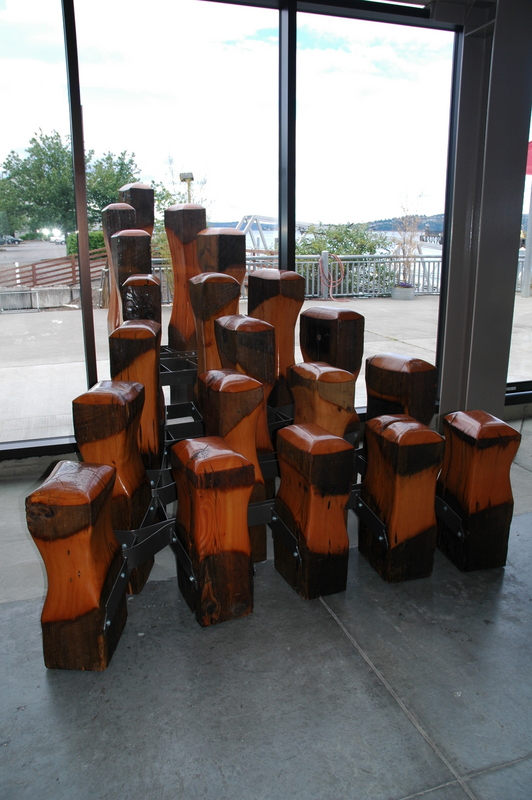
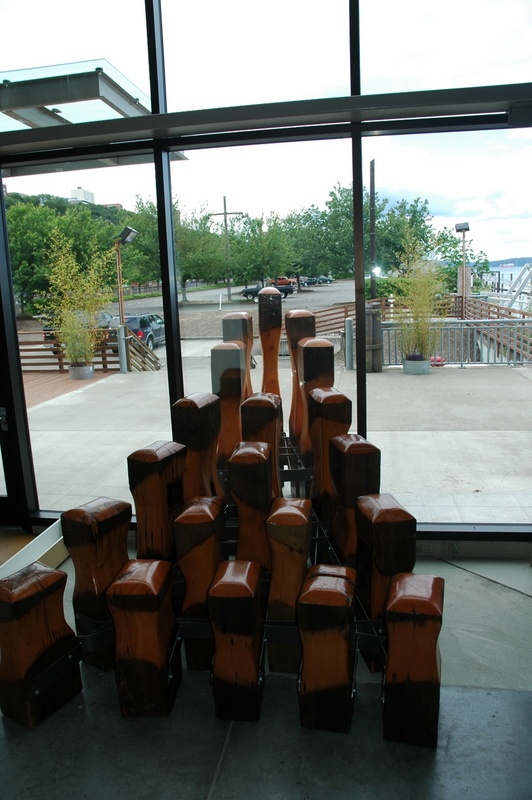

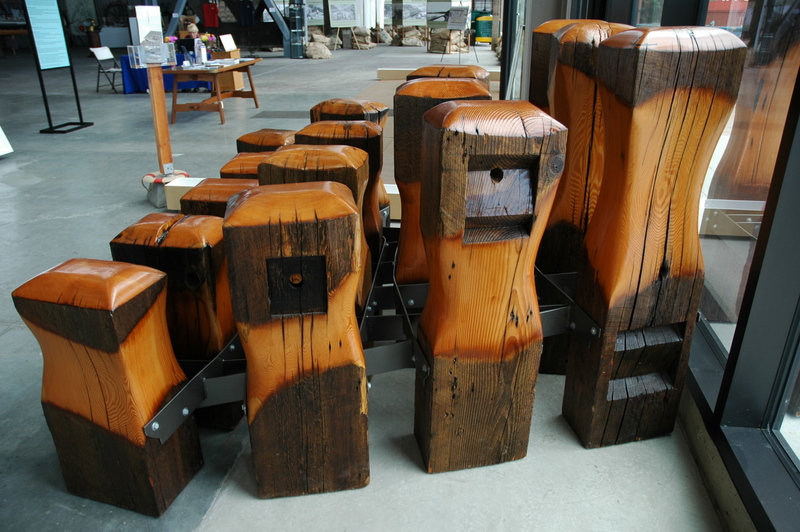
Construction almost complete:
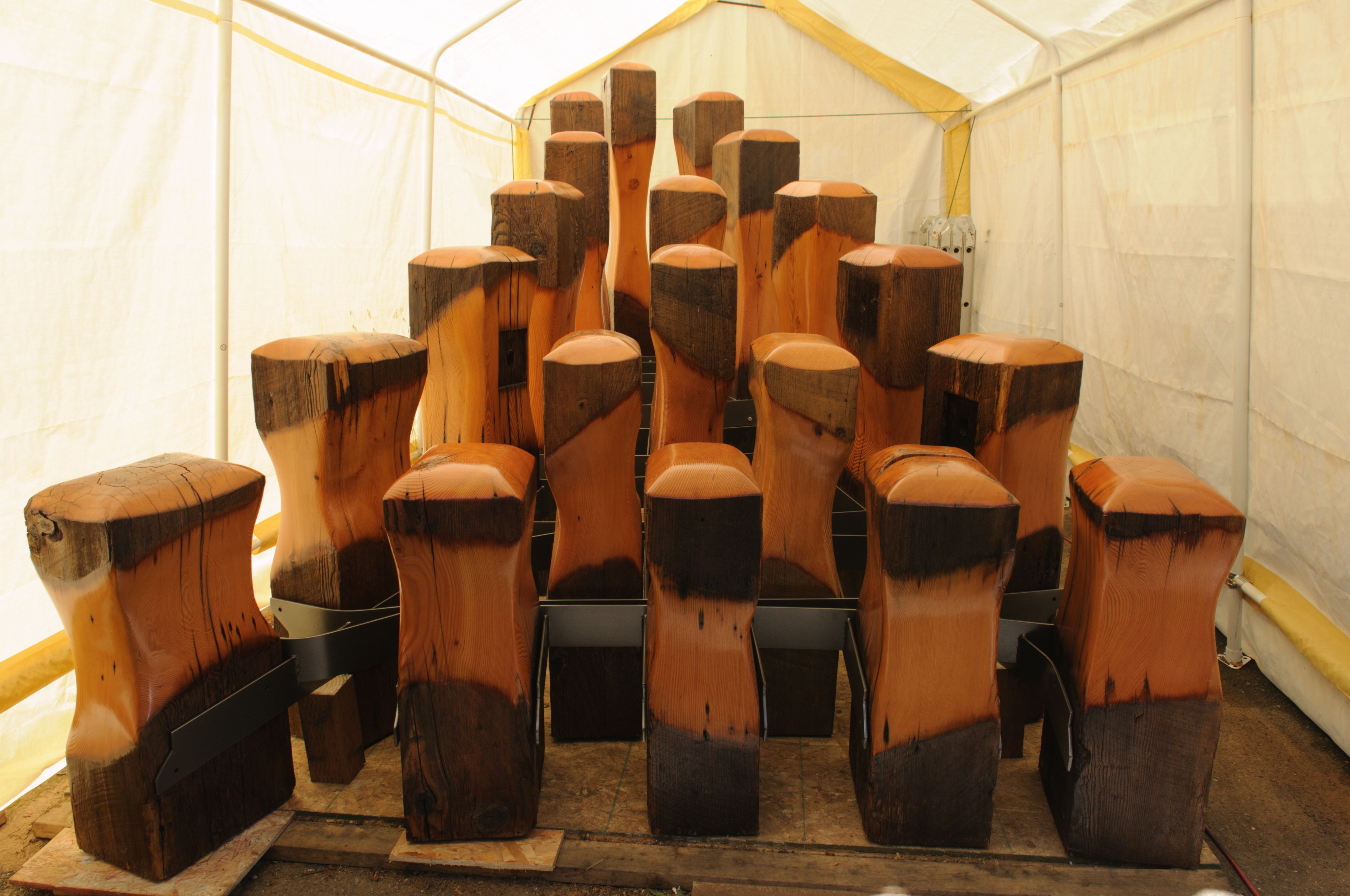
Initial model of the piece:
